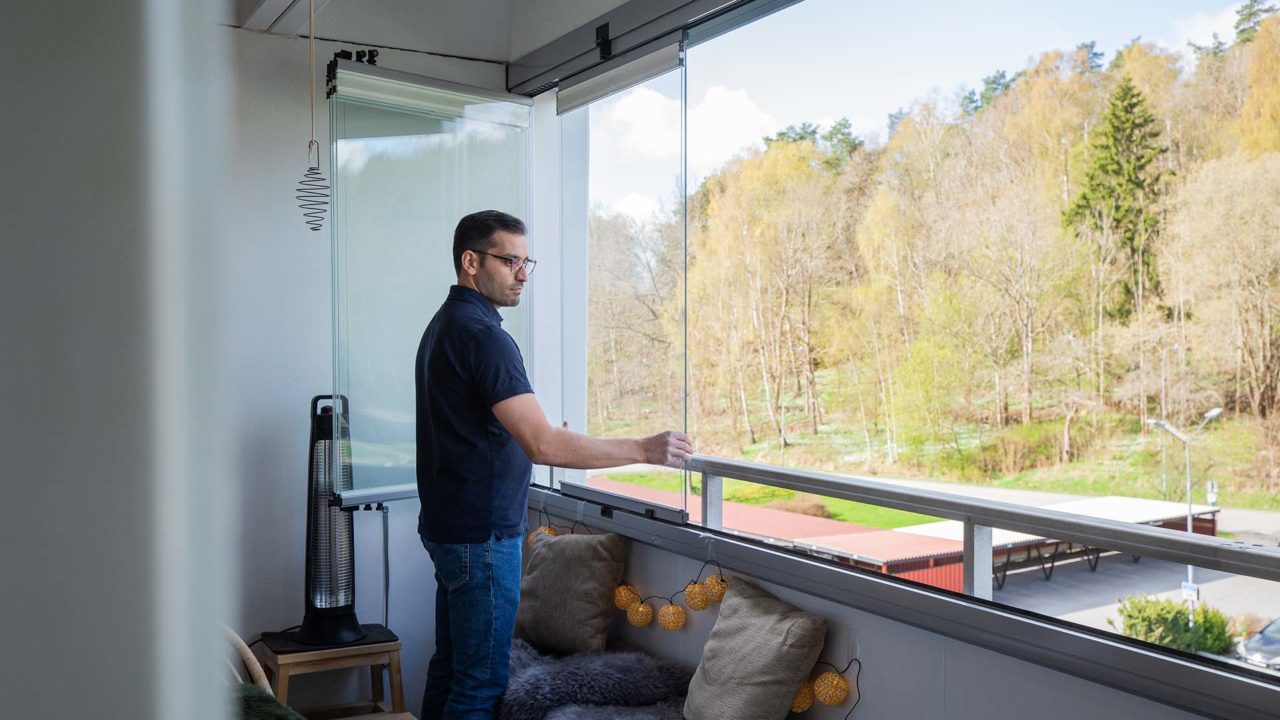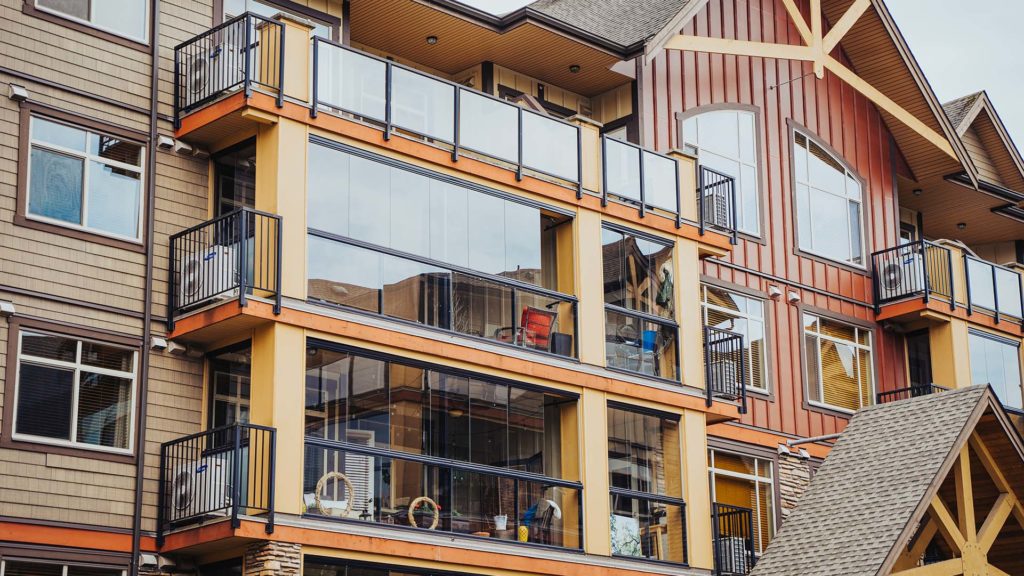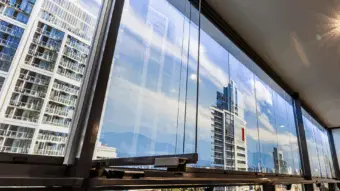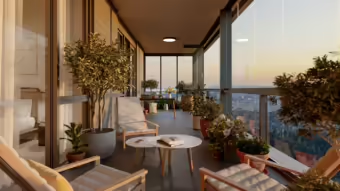
The rise in wellness architecture
And how balcony glazing is helping to support the transformation
Architectural spaces have long been recognized to promote social order and interaction with others as well as the environment. However, the connection of architecture and wellness has only become a popular topic in recent years, the pandemic acting as a catalyst in the conversation. In 2022, the theme of the World Architecture Day was even coined: “Architecture for well-being.” The discourse around wellness and architecture has given life to a concept fitting in its name: “wellness architecture.”
ArchDaily (2022) describes wellness architecture as consisting of:
- Building design which supports the health of the environment and the inhabitants of the building
- Optimized lighting and accessibility
- Sustainable and non-toxic building materials
- Stimulation of outdoor environments
- Alleviation of stress through design
- Meaningfulness of spaces
Rediscovering the balcony
One space which was practically re-discovered during the pandemic was the balcony. The reduced pollution and noise from the lockdowns enabled residents to gather together on balconies safely, making the most of the outdoors available to them. As life resumed to its normal pace, however, residents retreated back to the inside of their homes, where the sensory load was deemed to be more bearable.
This brought to light an important question: How can balconies be redeveloped to support architectural wellness, even outside the pandemic? The balcony holds great untapped potential, and retractable balcony glazing has stepped up to provide a solution. If only balconies were more usable and limited in exposure to pollution and noise, it is clear that inhabitants would be making better use of them.
Its comfort, its enjoyment, its security, its safety… it’s a really great environment. The retractability of the glazing also enables the full embracing of nature when the weather is favorable. Residents can easily adjust the balcony environment to be in alignment with the sensory load coming in from the outside.
Professor of Building Science at the University of Toronto, Ted Kesik

Architectural wellness and the glazed balcony
When re-visiting the constituents of architectural wellness, the connection to glazed balconies is clear.
- Balconies support the health of the environment by acting as a buffer zone, and thus providing energy savings to the building – at the same time, the inhabitants enjoy additional usable space
- Lighting is optimized through seamless design, protecting inhabitants from the whims of the weather while allowing for the maximization of natural light
- Glazed balcony spaces support accessibility by giving those with limited mobility easy access to the outdoors, whilst also creating a safe space for pets and children
- Aluminium and glass are recyclable materials with a long lifetime
- Nature is literally brought “into the home” with the transparency of the glass design, the retractability of the glazing providing opportunity to access surrounding nature fully – the glazing also significantly extends the growing season of plants, providing plenty of opportunity for the creation of “green spaces”, often recognized to aid in the reduction of stress levels
- Lumon’s glazed spaces provide opportunity to spend an increased amount of time on balconies, and to create more meaningful moments by expanding the usability of the home

See how Lumon can incorporate wellness architecture into your work
We know how much wellness brings any project to life, and that it comes from all sorts of corners of inspiration. See our portfolio of work, or get in touch here; we’d love to learn more about your project and how we can best support.
Read other related blog articles
-
Lumon Balcony Glazing into Your Show Suite: Costs, Benefits, and Process
Read more…Standing out in real estate is more important now than ever. How well you can capture a buyer’s interest early can make or break your sales momentum, and that’s the case regardless of whether your project is a mid-rise in a growing neighborhood or a large-scale urban development in a high-traffic area. The best way to stand out against the competition is to offer unique features that check off must-haves on your buyers’ checklists.
-
Installing Lumon Glazing on Every Balcony
Read more…Every design decision you make for a building project determines the identity, functionality, and marketability of your project. You’re always seeking out new, innovative, and sustainable solutions to make your project stand out against the other developments.
-


